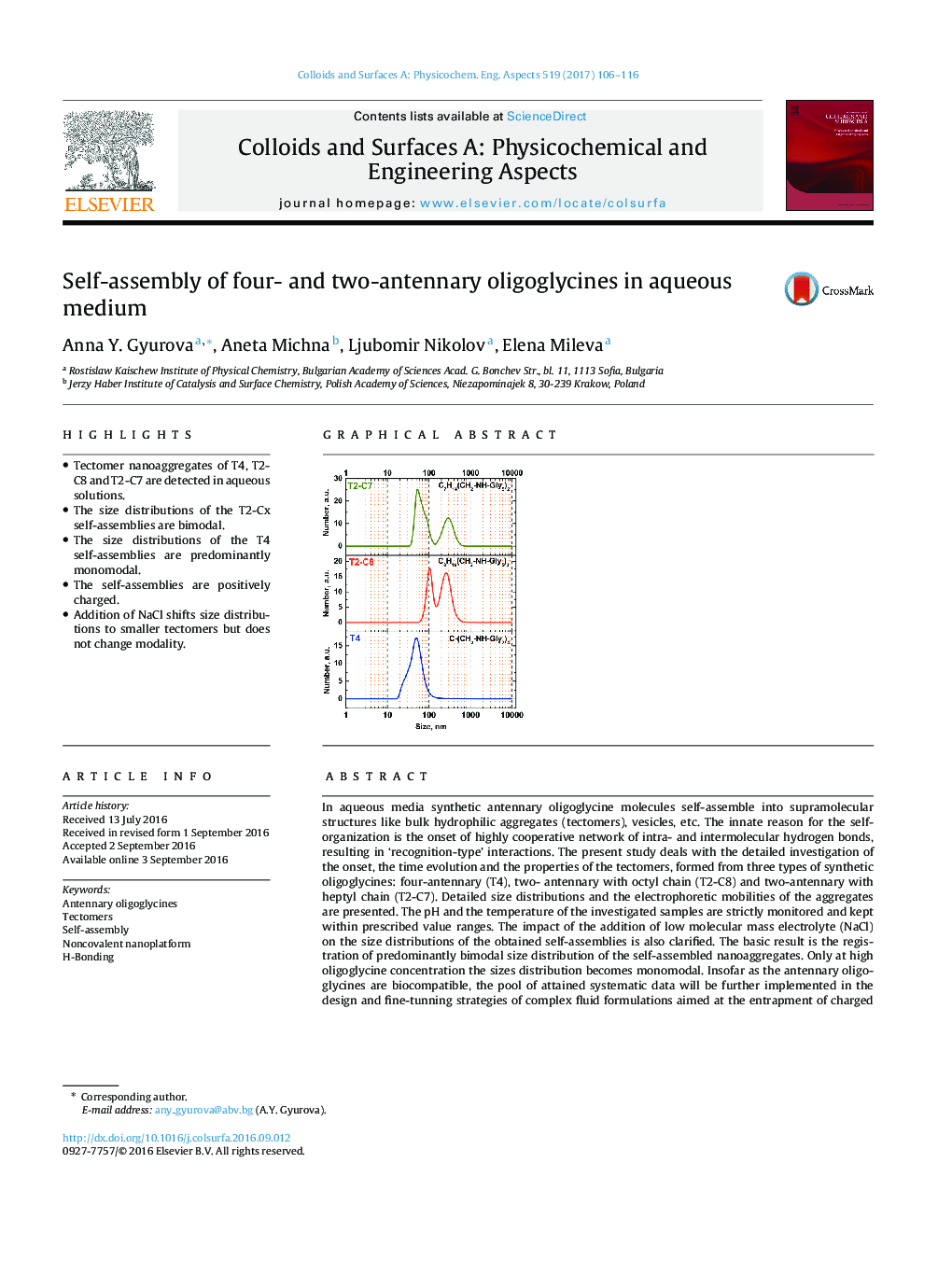| Article ID | Journal | Published Year | Pages | File Type |
|---|---|---|---|---|
| 4982334 | Colloids and Surfaces A: Physicochemical and Engineering Aspects | 2017 | 11 Pages |
â¢Tectomer nanoaggregates of T4, T2-C8 and T2-C7 are detected in aqueous solutions.â¢The size distributions of the T2-Cx self-assemblies are bimodal.â¢The size distributions of the T4 self-assemblies are predominantly monomodal.â¢The self-assemblies are positively charged.â¢Addition of NaCl shifts size distributions to smaller tectomers but does not change modality.
In aqueous media synthetic antennary oligoglycine molecules self-assemble into supramolecular structures like bulk hydrophilic aggregates (tectomers), vesicles, etc. The innate reason for the self-organization is the onset of highly cooperative network of intra- and intermolecular hydrogen bonds, resulting in 'recognition-type' interactions. The present study deals with the detailed investigation of the onset, the time evolution and the properties of the tectomers, formed from three types of synthetic oligoglycines: four-antennary (T4), two- antennary with octyl chain (T2-C8) and two-antennary with heptyl chain (T2-C7). Detailed size distributions and the electrophoretic mobilities of the aggregates are presented. The pH and the temperature of the investigated samples are strictly monitored and kept within prescribed value ranges. The impact of the addition of low molecular mass electrolyte (NaCl) on the size distributions of the obtained self-assemblies is also clarified. The basic result is the registration of predominantly bimodal size distribution of the self-assembled nanoaggregates. Only at high oligoglycine concentration the sizes distribution becomes monomodal. Insofar as the antennary oligoglycines are biocompatible, the pool of attained systematic data will be further implemented in the design and fine-tunning strategies of complex fluid formulations aimed at the entrapment of charged and/or hydrophobic nanospecies of various origin. The obtained results suggest that the self-assembled nanostructures of antennary olygoglycines have high potential for e.g. biomedical and water-purity-control applications.
Graphical abstractDownload high-res image (195KB)Download full-size image
